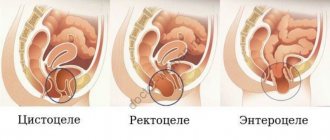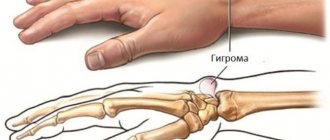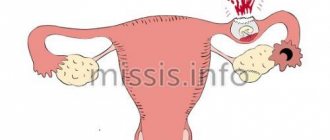A vaginal cyst is a retention tumor-like formation of the vaginal wall, which does not exhibit proliferative growth, but increases as a result of the accumulation of liquid contents. The disease is detected in 2% of young women. A patient may live for many years and not suspect that she has a tumor in the vagina. Gynecologists at the Yusupov Hospital often find a vaginal wall cyst by accident during an oncological preventive examination by a gynecologist. In the future, differential diagnostics with malignant neoplasms of the vagina are carried out using modern methods and devices from the world's leading manufacturers.
Diagnostically difficult cases are discussed at a meeting of the Expert Council. Professors and doctors of the highest category take part in its work. Leading specialists in the field of gynecology and oncology draw up an individual patient management plan. Treatment is carried out using innovative techniques. The only radical treatment method is removal of the vaginal cyst. Prices in Moscow are different. You can undergo treatment and remove a vaginal cyst at an affordable price at the Yusupov Hospital.
Vaginal cyst
The vaginal cyst is predominantly located superficially in the wall of the organ. In some cases, it can penetrate quite deeply and reach the tissue that is located near the vagina. Vaginal cysts come in different sizes - from a walnut to a small chicken egg. Its contents are transparent, yellowish or olive in color. A cyst may be located at the entrance to the vagina. A cyst of the vaginal vestibule is often diagnosed.
In most cases, the neoplasm has a soft-elastic or tight-elastic consistency, and its contents are serous in nature. The tumor can be round or ovoid in shape. The walls of the vaginal wall cyst are made up of connective tissue on the outside. It contains elements of muscle tissue. The cavity of the vaginal cyst is lined from the inside with cylindrical, prismatic or cubic epithelium. Vaginal cyst has ICD 10 code N76 (other inflammatory diseases of the vagina and vulva).
Prognosis after treatment
A cyst in the vagina is a formation that, in any size, requires therapeutic measures.
The prognosis for recovery is favorable since the cyst does not pose a particular danger to the woman’s health; it can only interfere with normal sex and the birth of a child through the natural birth canal.
Although the small size of the formation does not bother the woman, it tends to grow further; in order to avoid extensive surgical intervention, treatment should begin in the early stages of its development.
It is strictly forbidden to carry out self-treatment with medications; before starting treatment, you must consult with your doctor.
If a minimally invasive surgical treatment method was performed, it should be borne in mind that as a result, over time, the pathological process may reappear and such women must pay frequent, special attention to their health in order to cure the pathology.
Causes and mechanisms of development of vaginal cysts
The vagina in the embryonic period develops from the embryonic remains of the Wolffian or Müllerian ducts. From these same elements a cyst of the vaginal wall is formed. Gartner's ducts come from the perinephric region and in most cases end with a blind end near the vaginal vault. Sometimes they even go down to the entrance to the vagina. If a cyst of the vaginal wall develops from Gartner's ducts, then it is located on the lateral surfaces of the vagina or slightly anterior to it. With malformations of the vagina, a cyst develops, which arose from the Müllerian ducts.
Much less often, doctors are able to detect vaginal implantation cysts. They are formed by epithelial elements that penetrated into the thickness of the tissue during birth injuries, elimination of postpartum tears, surgical termination of pregnancy, excision of scars, and surgical treatment of vaginal fistulas. They are located in most cases on the back wall of the lower parts of the vagina. A vaginal cyst is not a contraindication for conception and pregnancy.
Symptoms of a vaginal cyst
In most patients, a vaginal cyst does not show any symptoms. The doctor identifies cystic formations when examining the vagina using gynecological speculum. Since the vaginal cyst in most cases has an elastic consistency, it may not be detected during a two-handed vaginal examination. The cyst of the vestibule of the vagina is usually located close to the entrance. Women can detect it by touch on their own.
To diagnose a vaginal cyst, no instrumental or high-tech research methods or tests are required. Ultrasound examination, cytological examination of the contents of the cystic cavity obtained during puncture, magnetic resonance and computed tomography are performed if a more thorough differential diagnosis with space-occupying formations of another origin is necessary.
Diagnostics
- Experienced gynecologists can detect a cyst in the vagina even during a routine gynecological examination. Mandatory diagnostic measures include an examination using colposcopy instruments.
- A very important point is to question the patient for the presence of predisposing factors for the development of the disease. When interviewing the patient, the doctor clarifies the severity of the symptoms that bother the woman.
- Laboratory methods include general tests of peripheral blood and urine, as well as bacteriological examination of a smear from the vaginal cavity.
- Women and girls with a similar diagnosis must attend a preventive examination of a urologist and proctologist to exclude concomitant diseases.
Treatment of vaginal cysts
The main method of treating a vaginal cyst is its surgical removal. Some doctors perform puncture of the cystic formation and aspiration of the contents in the hope that its walls will collapse and obliteration of the lumen will occur. In most cases, puncture of the vaginal wall cyst leads to temporary remission. After some time, contents accumulate in its cavity again.
During removal of a vaginal cyst (reviews are good), there is a risk of damage to the bladder and rectum. With the highly qualified doctors of the Yusupov Hospital, it is reduced to a minimum. If a vaginal wall cyst is detected in a pregnant woman, then the tactics depend on her state of health and the size of the cystic formation.
Since vaginal cysts do not in any way interfere with spontaneous childbirth, it is not necessary to remove them. If a giant vaginal cyst is identified that blocks the birth canal, either puncture it and aspirate the contents, or remove it. In some cases, in the presence of huge cysts of the vaginal wall, obstetricians plan delivery by cesarean section.
When a vaginal cyst is diagnosed, it is safer to remove it using a gentle marsupialization operation. During surgery, the surgeon dissects and empties the vaginal cyst, then sutures its walls to the vaginal mucosa.
Radical removal of a vaginal wall cyst is performed as follows:
- The operating gynecologist dissects the vaginal mucosa with a longitudinal incision;
- The cyst is removed using a sharp or blunt method;
- Catgut sutures are placed on the bed of the cystic formation and the mucous membrane.
Sometimes cysts of the vaginal wall with their upper pole can go quite deep into the tissue located around the vagina, bladder or rectum. In this case, the possibility of removing them through the vagina is minimal. Then surgeons are forced to perform laparotomy.
To remove a cyst of the vestibule of the vagina, the cyst is dissected to the capsule of the neoplasm. Currently, doctors give preference to oval incisions, since a longitudinal incision may cause the vaginal wall cyst to burst. In this case, its contents may enter the vaginal cavity. An oval incision allows separation of the vaginal vestibule cyst without damaging it. Then the surgeon grabs the area of skin with forceps and pulls it to the incision line, while carefully separating the capsule of the vaginal cyst.
Prevention measures
Every woman is at risk of developing this disease, which is why we should not forget not only about undergoing preventive examinations with a gynecologist, but also about taking preventive measures.
Prevention of the disease consists of:
- observing the rules of intimate hygiene;
- avoiding general hypothermia of the body;
- undergoing preventive examinations at least once a year;
- undergo timely treatment for inflammatory diseases;
- maintain an active lifestyle;
- avoid casual sex;
- completely eliminate the use of alcohol and tobacco.
Women who comply with all of the above preventive measures are never associated with such problems and do not undergo surgical intervention, which is always traumatic for the body.
Traditional recipes for the treatment of vaginal cysts
Vaginal wall cysts have virtually no tendency to become malignant. This is the main reason why it is permissible to use traditional medicine methods for their treatment. Before being treated by witch doctors and healers, undergo an examination and receive recommendations from gynecologists at the Yusupov Hospital.
In order to prepare an infusion from a collection of medicinal herbs, you need to take one spoonful of the following plant material:
- Salvia officinalis herbs;
- Stinging nettle roots;
- Herbs St. John's wort;
- Herbs are a series of tripartite, which must be collected at the beginning of flowering.
Add a tablespoon of aerial parts of sweet clover, wormwood herb, dill seeds, prickly tartar herb and common yarrow herb. Take one tablespoon of herbal mixture and pour a glass of boiling water. Cover the container with a lid, place on low heat and leave to simmer for three or four hours. Then strain the liquid through a fine sieve or use gauze folded in four for this purpose. Take the infusion for one year, half a glass three times a day after meals, two hours later, for one year. During treatment, visit a gynecologist for a preventive examination and monitoring the dynamics of cyst development in the vagina.
For the second collection, you need to take one teaspoon each of the herb tripartite, stinging nettle, tricolor violet, wormwood and St. John's wort, as well as the following ingredients:
- Greater burdock roots;
- Sandy immortelle flowers;
- Walnut leaves;
- Small centaury grass;
- Joster fruits.
To them add a tablespoon of knotweed herb, one teaspoon each of oregano, horse sorrel roots and valerian officinalis roots. Pour 3 tablespoons of the prepared mixture into three glasses of boiling water. Close the dish with a lid and wrap it with a thick cloth. Leave the mixture to steep for at least eight hours. Then strain the liquid through five layers of cheesecloth or a fine-mesh sieve. Take the resulting infusion for vaginal cysts, half a glass half an hour before meals four times a day.
For women who have been diagnosed with a vaginal cyst, traditional healers recommend a herbal mixture, which consists of the following components, taken in equal proportions:
- Violet flowers;
- Ground parts of the sequence;
- Nettle herbs;
- Walnut leaves;
- Artemisia herbs;
- Zhoster fruits;
- Oregano;
- Valerian roots;
- Horse sorrel roots.
To the resulting collection you should add four parts each of immortelle flowers, St. John's wort, centaury and knotweed, as well as burdock roots. Place two tablespoons of the mixture in a thermos and pour 400 ml of boiling water into it and leave overnight. The infusion should be taken 100 ml before meals for one month. The next course starts in a week. This is done until complete recovery. During treatment with traditional methods, women should periodically visit a gynecologist at the Yusupov Hospital.
Representatives of traditional medicine recommend using celandine and burdock juice and golden mustache tincture as methods of herbal medicine for vaginal cysts. Women squeeze the juice from the leaves of young burdock and drink one tablespoon three times a day, before meals. At night, a tampon moistened with the same juice is placed in the vagina. Milk slurry is used in the same way. In order to prepare it, you need to grind burdock leaves in a meat grinder and take them one tablespoon, 3 times a day, on the eve of meals. The duration of the course of therapy is one month.
Homeopathic medicines can contribute to the complete disappearance of cystic formations. In no case should you use ready-made complex homeopathic preparations, since when prescribing a particular remedy, the homeopath takes into account the individual characteristics of each patient. When taking homeopathic remedies and conventional medicines together, you can get a temporary unstable result. When treating with homeopathic medicines, you must be psychologically prepared to completely stop taking pharmaceuticals.
Complications
If you do not take into account the fact that a cyst in the vagina does not have a negative effect on the menstrual cycle and the birth process, it can provoke the development of the following complications:
- infection of surrounding tissues due to the purulent nature of the cystic contents;
- relapses of pathologists after therapeutic measures;
- the formation cavity may burst.
As statistics show, most complications develop against the background of independent treatment or its complete absence. Many women neglect their health and do not even attend preventive examinations with a gynecologist for many years.
Prognosis and prevention of vaginal cysts
Timely detection and treatment of vaginal wall cysts is necessary to ensure that problems do not arise later during pregnancy. To prevent the patient from developing cysts in the vagina, gynecologists need to carefully perform vaginal manipulations and carefully conduct childbirth.
If asymptomatic cysts are detected by chance, doctors monitor them over time. They do not affect reproductive function. If vaginal cysts begin to increase in size, they are removed surgically. After puncture or incomplete enucleation of a vaginal cyst, the neoplasm may recur.
If there are vaginal cysts, women should immediately consult a gynecologist. You can make an appointment by calling. Contact center specialists will select a time convenient for you. Before removing a vaginal cyst, they will try other treatment methods if you wish. If they are ineffective, gynecologists will perform laparoscopic removal of cysts in the vagina. Reviews about the operation are positive.
Reasons for education
There are many causes of cysts in the human body, but the vagina has communication with the external environment, and the appearance of cysts in this area is less common.
Etiological factors that provoke the appearance and growth of cysts in the vagina include:
- abnormal structure of the vaginal walls , which forms during the prenatal development of the girl;
- traumatic effects on the perineal area, aggressive sex;
- surgical interventions in connection with artificial termination of pregnancy , and other types of endoscopic procedures;
- complications during childbirth or the postpartum period;
- inflammatory processes due to bacterial infections;
- failure to maintain cleanliness and care of the intimate area.
Today, the most common cause of cyst formation in the vagina is considered to be trauma. Hematomas remain in areas of damaged tissue, which eventually turn into cysts.









